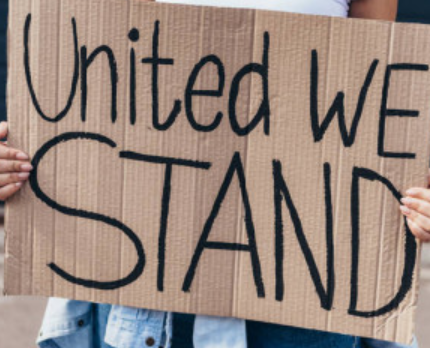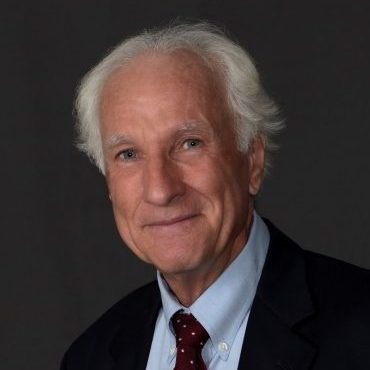“You have inherited a system which took a lot of blood, sweat and tears to create. Its benefits are clear to anyone who cares to look, but we need to constantly educate our policy makers, the media and the public because what they often hear is a quite different message.”
 Our system of public/private sector R&D alliances, backed by patent rights, is literally saving the world. Yet it has never been more endangered. With that in mind, below are remarks I delivered to the Federal Laboratory Consortium earlier today that might be of interest.
Our system of public/private sector R&D alliances, backed by patent rights, is literally saving the world. Yet it has never been more endangered. With that in mind, below are remarks I delivered to the Federal Laboratory Consortium earlier today that might be of interest.
It’s hard to believe that, not too long ago, alliances between the public and private sectors were unheard of unless the government was picking up the entire tab. After World War II, the policy was that if the government funded even a small percentage of the research, it would take any resulting inventions away from those who created them to make the discovery readily available to anyone and everyone.
While that might sound noble, it was a death knell for commercialization because then, like now, these discoveries required significant private sector effort and investment to turn into commercial products. The result was that not only were few government funded inventions ever developed, but even worse, companies avoided alliances with government funded institutions.
That would come back to bite us in the 1970s, as our foreign competitors began taking away technology markets that we had long dominated. In those days we also had partisan divides in Congress, but Senators [Birch] Bayh and [Bob] Dole formed a strong bipartisan alliance once they learned that 28,000 inventions were sitting on the shelves with little chance of development, and that not a single new drug had come from [the National Institutes of Health] NIH research when the patent was taken. They knew we could no longer afford to squander the potential benefits of billions of dollars of taxpayer-funded research, so things had to change.
The resulting Bayh-Dole Act reversed 30 years of government patent policy. It allows academic institutions and companies to own inventions made with federal assistance. It gives a priority to licensing small companies and those who will manufacture resulting products in the United States, requires that university inventors receive a percentage of royalties and that other monies go to fund more research. The law also allows federal agencies to license their inventions.
The law passed just as the biotechnology revolution was beginning. We didn’t have any companies testify at our hearing that they were interested in university research but when startup companies began forming around academic inventions, attitudes began to change.
Soon, the United States had taken the lead in biotechnology and it would shortly take the lead in the life sciences. President Reagan then wondered why we weren’t seeing similar activities around federal labs and called for a study.
It found that the labs lacked similar authorities as the universities. Further, the Office of Personnel Management ruled after Bayh-Dole passed that agencies lacked the authority to retain royalties. That meant that the expenses of tech transfer fell on the agencies, but any rewards went to the Treasury Dept. You can imagine how that worked.
At the time, I had moved from the Senate staff to working at the Department of Commerce overseeing Bayh-Dole and helping to develop technology policy. Senator Dole contacted us about opening up the federal labs and we drafted what became the Federal Technology Transfer Act as an amendment to Bayh-Dole. It allowed agencies to retain royalties, required royalty sharing with federal inventors and authorized Cooperative R&D Agreements with industry. Soon afterwards, Senator Dole left the Senate Judiciary Committee and Senator Gorton of Washington decided to pick up the mantle. He asked us to rewrite the legislation to amend the Steven-Wydler Act, which came under the jurisdiction of the Senate Commerce Committee on which he served. After a lot of hard work, the bill was signed into law.
The resulting system for commercializing government-funded research has become the internationally recognized gold standard. The Economist’s Technology Quarterly called Bayh-Dole “perhaps the most inspired piece of legislation passed over the last half century.” It helped ignite a renewal of the American economy that’s continued to this day.
One result was the seamless combination of our public and private sectors last year to combat COVID-19. Public/private sector alliances developed new vaccines in a matter of months rather than years. But despite our evident successes, there remain those who want to return us to the pre-Bayh-Dole days.
They are now calling for imposing “reasonable pricing” requirements in licenses and [Cooperative R&D Agreements] CRADAS. Ironically, that experiment was run in the early ‘90s, when political pressure was applied to NIH and it was a catastrophe. Rather than lowering drug prices, agreements collapsed. After a few years, NIH ended the policy, declaring that it had accomplished no public benefit while harming important partnerships.
Similar attempts are being made to misuse the march-in rights provisions of Bayh-Dole to impose artificial pricing on federally-funded inventions. Those advocating these changes are the same ones who fought against the very policies which have been so successful. Academic patent licensing alone has contributed almost $2 trillion to our economy. We form three new companies and introduce three new products to the market every day of the year based on federally-funded inventions. We have almost 300 new drugs and vaccines fighting disease here and around the world because of our technology transfer system. No other country comes close to matching these numbers.
So, here’s where you come in. You have inherited a system which took a lot of blood, sweat and tears to create. Its benefits are clear to anyone who cares to look but we need to constantly educate our policy makers, the media and the public because what they often hear is a quite different message.
Remember, just one year ago, COVID-19 shut down the world. But rather than putting our heads under the covers, immediately the best and brightest minds in our public and private sectors went to work. We developed new therapies and brought desperately needed vaccines to the market in record time. That could not have happened without the confidence industry has in government-supported facilities as reliable partners in high stakes research. That trust has been hard earned and it can disappear overnight if we allow our system to be undermined. Our foreign competitors, like China, would laugh out loud if we were ever so foolish to return to the failed policies of the past. Indeed, China adopted a Bayh-Dole model for its university system in an effort to overtake our lead.
Our technology transfer system has brought unimagined benefits to public health and wealth, but it’s very fragile. It’s now up to you to protect it.
Thank you.
Image Source: Deposit Photos
Author: VitalikRadko
Image ID: 287962910

![[IPWatchdog Logo]](https://ipwatchdog.com/wp-content/themes/IPWatchdog%20-%202023/assets/images/temp/logo-small@2x.png)

![[Advertisement]](https://ipwatchdog.com/wp-content/uploads/2024/04/Patent-Litigation-Masters-2024-sidebar-early-bird-ends-Apr-21-last-chance-700x500-1.jpg)

![[Advertisement]](https://ipwatchdog.com/wp-content/uploads/2021/12/WEBINAR-336-x-280-px.png)
![[Advertisement]](https://ipwatchdog.com/wp-content/uploads/2021/12/2021-Patent-Practice-on-Demand-recorded-Feb-2021-336-x-280.jpg)
![[Advertisement]](https://ipwatchdog.com/wp-content/uploads/2021/12/Ad-4-The-Invent-Patent-System™.png)







Join the Discussion
No comments yet.